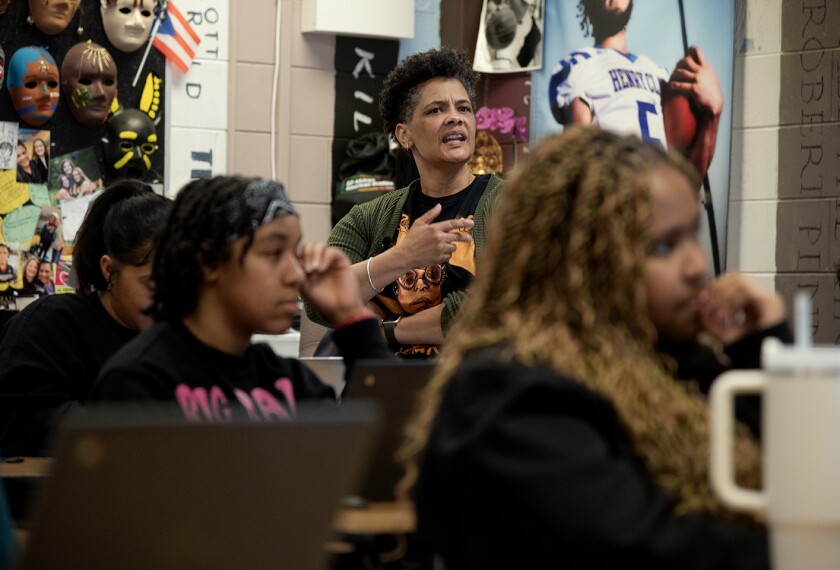For the past decade, Quality Counts has focused on the policy efforts states have undertaken to improve K-12 education. But that schooling is just part of a larger continuum of learning opportunities that starts in infancy and progresses into adulthood. And if Americans are to make the most of those opportunities—both as individuals and as a nation—their learning should build on itself at every step along the way. As Isabel V. Sawhill, a co-director of the Center on Children and Families at the Brookings Institution, puts it: “Skill begets skill, and each stage of education builds on skills acquired at an earlier stage.”
Yet in the United States, the historical separation between various levels of education, and the consequent lack of communication and coherence across sectors, means that children and older students are lost at every juncture. Just consider:
- Even before kindergarten, the average cognitive scores of children from the highest socioeconomic group are 60 percent above those of children from the lowest socioeconomic one.
- Fewer than one-third of 4th graders read at the “proficient” level or higher on national tests, and fewer than a third of 8th graders reach that benchmark in reading or mathematics.
- The gaps in reading and math performance between poor, African-American, and Hispanic students and their better-off, white, and Asian peers are roughly two grade levels—or at least 20 points on a 500-point scale.
- Fewer than eight in 10 white teenagers graduate from high school on time with a regular diploma. That figure drops to 52 percent for black students and 56 percent for Hispanic students.
- While some 33 percent of white Americans ages 25 to 64 have at least a four-year college degree, that’s true for only 18 percent of black Americans and 13 percent of Hispanic Americans.
Young children from low-income families perform significantly lower on assessments of literacy and mathematics achievement even before they start kindergarten, based on an analysis of data from the U.S. Department of Education’s Early Childhood Longitudinal Study, Kindergarten Cohort. Rather than closing, those differences persist as students progress through school.

Note: Achievement is expressed in standard deviations above or below average
SOURCE: Valerie E. Lee and David T. Burkham, “Inequality at the Starting Gate,” 2002
Such statistics cloud the future not only for individuals, but also for the country. That’s because a growing portion of the future U.S. workforce will come from low-income and minority groups that have been least well served by the education system at all levels.
Unless the nation improves the educational prospects of its young people generally, and of its poor and minority students in particular, the United States’ place in the global economy and the strength of a democracy based on an informed, participating citizenry are seriously threatened, prominent Americans warn.
- Attainment Divide
More than seven in 10 Asian-Americans ages 25 to 64 and more than six in 10 non-Hispanic white adults have completed at least some college. In contrast, nearly seven in 10 Hispanic Americans and half of black Americans have a high school diploma or less, according to 2005 data from the U.S. Census Bureau.

- Growth in Graduation
The percent of public high school students graduating with a diploma in four years stagnated during much of the 1990s, hovering around 66 percent. Since then, graduation rates have slowly but steadily improved. Although most groups show improvement, large racial and ethnic gaps in graduation rates persist.

- Persistent Reading Gaps
Data from the 2002 National Assessment of Educational Progress, often known as “the nation’s report card,” show that high school seniors from low-income families read on a par with middle school students from more affluent families.

“Suddenly, Americans find themselves in competition for their jobs not just with their neighbors, but with individuals around the world,” Norman R. Augustine, the retired chairman and chief executive officer of the Lockheed Martin Corp., said in 2005 testimony before Congress.
“How will America compete in this rough-and-tumble global environment that is approaching faster than many had expected?” he asked. “The answer appears to be ‘not very well’—unless we do a number of things differently from the way we have been doing them in the past.”
To do so will require building bridges across the diverse and fragmented system of education and training in the United States—bringing together institutions that traditionally have operated apart.
For that reason, beginning with this edition, Education Week’s annual Quality Counts report will focus on the connections between K-12 education and the other systems with which it intersects: early-childhood education, postsecondary education and training, teacher preparation, and workforce and economic development.
After all, while states tend to treat those policy areas in separate silos, young people themselves experience the system as a continuous—or discontinuous—whole.




